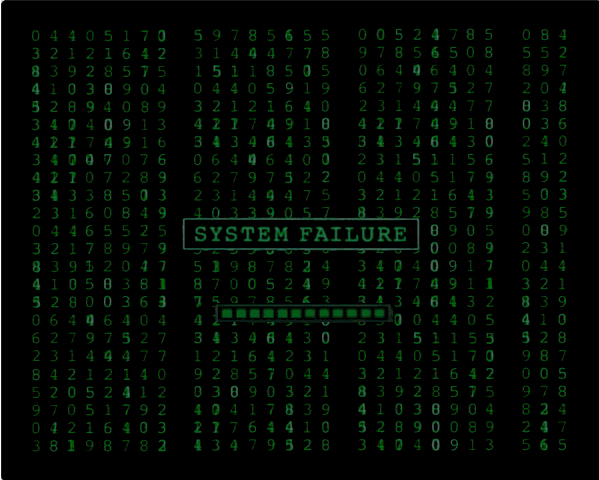Oops, or, The Great Web Server Borking of 2016
On Thursday, while reading up on HTTP/2 and all the brilliant things it has to
offer, I logged into my trusty old web server in an attempt to upgrade
Apache and reap the benefits. This wasn’t a big deal in my mind as it was
only a small dot version upgrade. So, I switched my tmux session to my
server admin view and ran the command:
sudo apt-get update && sudo apt-get upgrade apache2
I should have realized something was wrong when I noticed grub was
upgrading as part of the dependency tree. I even said aloud, “I wonder why
grub is in there?” But I just shrugged it off and went back about my
business.
When I checked back on that session I noticed that apt finished with an
error. The Apache service was offline and my lovely little server was now
sitting up on EC2 billing away while doing jack. Again, I should have
realized something bigger was wrong, but I was mentally in my work and
only dealing with the server in a side task as I went about my day. Little
things were adding up.
- grub upgraded
- apt-get failed a basic upgrade
- Apache wasn’t restarting
Since I wasn’t thinking straight and couldn’t be bothered to investigate I decided to do the last thing any sane sysadmin would do, I rebooted the box. I suspect the line of thinking went something like, “Grub upgraded, maybe I’m running some old config still from last startup and it needs a fresh whatever in order to whosit properly.” Obviously I didn’t think things through.
sudo reboot
Sadly, that would be the last command ever issued to my lovely little VM.

The box didn’t come back up cleanly. The ssh daemon wasn’t running so getting a peek at what went wrong was especially difficult. I ran through the server log that AWS reveals and blamo, there it was. My boot loader was failing and the box couldn’t complete the init process.
The good news here is that I am a reasonable non-idiot most of the time
and I had a recent snapshot backup. It should just be a matter of spinning
up a new VM from that snapshot and I’d be kicking again and the only price
would be some irssi shortcuts and styling I’d been working on outside of
git.
Now, I’ve been in the server game for a while, but I’ve never had the personal experience of restoring an AWS snapshot to a working EC2 instance before. I went on a little hunt to find out the proper process. It was surprisingly difficult to find a straight forward how-to that didn’t make me want to gouge my eyes out. Eventually I figured it out, got the instance all configured, and attached my sparkly back-up volume. I clicked on the magical “start instance” control and waited.
And waited.
And then probably muttered something better suited to a Trump live-mic incident.
Miraculously, pulling up the server log revealed the exact same boot loader issue I’d seen before. But this was my backup! This was done before all that stuff had gone awry, right? Nope, apparently the Apache upgrade had nothing to do with whatever I broke. It just served as the trigger that drove me to reboot and discover I’d severely Borked My BoxTM.
I know some extremely talented unix dudes who would probably have had the ability to pull things back together and get the box back in working order even without a shell or init.d working. I am constantly in awe of the magic they can work. Instead of wasting days and weekends trying to do that myself, I decided it was a sign from the heavens that I needed to start fresh. That server, after all, had originally started four hosting companies ago and had been upgraded and ported through a hodgepodge of stacks and countries. Maybe starting anew could be a good thing?

The Rebuild
I keep pretty much all my web content in git on one service or another. I wasn’t worried about losing anything with my server being a steaming pile of #trump. I have also recently been following a trend toward static-site-publishing. That, in particular, opened some new options.
I have one website in development that I have hosted on AWS S3, served through CloudFront, with the domain hosted in Route53 and SSL handled by AWS Certificate Manager. All told, I spend about $0.13 a month on hosting fees for that property. Since this blog, my other one, and many other silly web projects are also static in nature, I decided that I’d use this same configuration with all of them!
Aftermath
My content is far cheaper, way faster, and much more stable than it ever was before. There are still some gaps in what I had formerly running from what’s up today: namely my portfolio site and son’s photo album. I had been planning a revamp on the portfolio at some point anyway, so this may fast-forward some things.
I’m not sure if I’ll return to EC2 at all or stay exclusively in the static web-hosting world. I’m still feeling pretty stupid about the whole situation, but sometimes you need a major event to trigger a change.
How about the rest of you? Have you done anything so boneheaded as this and managed to turn it into a positive? I’d love to hear some horror-stories turned opportunities. Share below!